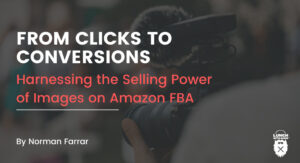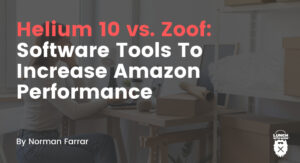11 Reasons to Take an Amazon FBA Selling Course
By Norman Farrar
Table of Contents
- Why Should You Take an Amazon Selling Course?
- Understanding the Business
- Knowing How to Price
- Choosing a Shipping Method
- Being Aware of Entry Barriers
- Gauging Your Competition
- Acquiring Positive Reviews
- Avoiding Bans & Selling Restrictions
- Conceptualizing Amazon’s Costs & Complications
- Comprehending the Tax Setup
- Estimating Profitability
- Optimizing Listings
- Choose Your Amazon Selling Course Wisely
Millions of people are unemployed right now, and even more are employed but dissatisfied with their jobs. As a result, many of these people are thinking about selling on Amazon in the hopes of creating a profitable store or starting a shipping service.
Why Should You Take an Amazon Selling Course?
There are countless success stories online about people who have made money selling on Amazon. So what do the majority of them share? Most of Amazon’s successful sellers have taken an Amazon selling course to understand the ropes and generate money.
Here are a few reasons to think about taking such a course.
1. Understanding the Business
It’s not as simple as putting stuff up on Amazon and hoping it will sell. There’s a lot to selling on the platform that necessitates marketing and promoting yourself and getting your page and Amazon store out there and visible. You can learn these things if you take the right course.
2. Knowing How to Price

One of the few ways to succeed is to have competitive pricing within your niche. You also have to consider that Amazon has restrictions on how much you may charge. Going into this business blindly, without the help of an Amazon selling a course, could result in failure or cancellation.
3. Choosing a Shipping Method

Most people who start selling on Amazon don’t have a viable way to store items and ship them out of their homes. The optimal training will teach you how to store your items appropriately and choose the best shipping options to ensure that all of your orders are delivered on time.
4. Being Aware of Entry Barriers
It’s becoming increasingly difficult to get on Amazon and begin selling. As a result, Amazon has been forced to grow more stringent in allowing who may sell, what can be sold, and how, as the platform continues to take on new sellers who don’t always follow the regulations.
Sellers must first obtain approval to sell clothing, shoes, handbags, automobiles, and various other commodities. Unfortunately, the number of categories requiring approval continues to rise. And getting approved isn’t simple.
A good Amazon selling course will highlight these key challenges for you to be in a better position to face such obstacles while getting started.
5. Gauging Your Competition
Many Amazon vendors don’t have unique merchandise. Instead, they just resell products obtained in bulk from wholesalers, much like a retail gift shop would. If you can buy anything in bulk, so can many other people, resulting in a lot of competition for the same products.
As a result, many sellers are developing singular products with the help of organizations that will place a seller’s brand name on an existing product and make minor alterations like color, fabric, or formulation changes. Private-label or white-label items are a middle ground between reselling current products and building your own from the ground up.
Amazon has also experimented with several tools to help merchants overcome the competition in various ways, such as the ability to automatically reprice your products, clear out old inventory, and keyword-optimize your listings.
Sellers that increase their bottom-line profits quicker than their top-line sales year over year tend to do better. Because many sellers use repricing software to automatically modify their prices to stay competitive when one seller out-prices another, it sets off other sellers’ repricers, and a downward pricing spiral ensues.
A competent Amazon selling course will tell you exactly which tools to use to analyze your competition correctly.
6. Acquiring Positive Reviews

If you think eBay consumers are horrible at posting feedback, wait until you see Amazon shoppers. On Amazon, roughly one out of every 30 buyers leave feedback, so you’ll need to sell many items to build up your feedback, whereas one out of every three eBay customers does.
There are several ways to leverage positive reviews for your products from your customers. All you need is an Amazon selling course that guides you with such strategies.
7. Avoiding Bans & Selling Restrictions
Amazon collaborates closely with well-known manufacturers and businesses. If a brand decides that third-party sellers should not be allowed to sell their products on Amazon, Amazon can prohibit their products at any moment.
This means that the goods can only be sold on Amazon by the brand owner. While this may appear to be a negative in general, if you’re a seller with your own brand, Amazon has created a brand registry and other safeguards to help you sell more successfully on the platform without having to compete with people who obtain your products through liquidators or other unethical means, or who attempt to counterfeit your products.
As an Amazon business owner, it is essential to know these regulations and take appropriate steps. You are well-oriented with such topics after taking a decent Amazon selling course.
8. Conceptualizing Amazon’s Costs & Complications

Recognizing Amazon’s costs and complications is especially important if you sell on Amazon’s FBA program, even though Amazon has videos and written content that explains how to use the FBA program and other Amazon programs in detail.
Fulfillment on Amazon occurs when you deliver your things to an Amazon warehouse, where they are stored until a buyer purchases them. Then, Amazon packs and ships the item to the purchaser once it sells.
Learning the preparation system for putting items into Amazon’s warehouses is comprehensive and challenging. Many things can go wrong, including damaged items, misplaced items, and other warehouse concerns. Sellers are not always reimbursed for client returns, and items lost or damaged in the warehouse may not be fully refunded.
Amazon fees are around one-third of the item’s sale price, excluding the $39.99 monthly fee and ever-increasing warehouse storage fees. Amazon periodically offers to reduce the fee it charges on each sale in exchange for you lowering the price of your product.
There are additional challenges that even large or long-term Amazon merchants haven’t sorted out in addition to the ones listed above. But taking an Amazon selling course allows you to be aware of these before getting started.
9. Comprehending the Tax Setup
Many people believe that Amazon automatically collects sales tax on purchases made through the Amazon marketplace, regardless of the state where the customer purchased the item. However, always keep in mind that the seller is ultimately responsible for paying sales taxes to each state.
Amazon now exclusively processes sales tax transactions on behalf of merchants in Alabama, Connecticut, Iowa, Minnesota, New Jersey, Oklahoma, Pennsylvania, and Washington as a “Marketplace facilitator.”
Unless you’re in one of the eight states where Amazon acts as a Marketplace facilitator to collect and remit sales taxes for you, it’s up to each seller to specify which state they want Amazon to collect a tax from and to manage its remittance to the appropriate tax jurisdictions across the country.
As an online retailer, after completing an Amazon selling course, you will know a variety of tax remittance services, such as:
- Taxjar.com
- Avalara.com
- Taxify.com
- Vertexsmb.com
10. Estimating Profitability
Too many sellers are more concerned with top-line sales figures than with bottom-line profitability. Typically, sellers will state things like, “I want to sell $1 million a year on Amazon” or “If only I could sell $10 million a year on Amazon,” neglecting the expenses that will take up practically all of that money.
Being a big seller on Amazon has few long-term benefits. However, Amazon has begun to recognize this and now offers larger sellers a dedicated Amazon account executive to navigate the red tape and optimize their business.
For many sellers, it’s far better to focus on bottom-line growth, account for all expenditures up front and work from a knowledge of your Amazon business’s genuine profit level. Sellers that try to reduce costs and increase their bottom-line earnings quicker than their top-line sales have a better chance of succeeding.
This usually necessitates a stock-keeping unit (SKU)-level understanding of product profitability, which includes overhead and some indirect costs in the profit calculation for each SKU. Popular Amazon selling courses are designed to help business owners with this.
Third-party software providers, such as Inventorylab.com, automate tracking costs by SKU and allow sellers to add in overhead, shipping, and other related product costs to generate net profits per product and an overall profit and loss statement.
11. Optimizing Listings

To improve the listing quality of your catalog, you first need to leverage some of the data sources provided through Amazon’s Seller Central dashboard. Additional tactics for advanced listing optimization are the crux of several credible Amazon selling courses.
Many sellers consider the process of creating and optimizing product listings to be a one-time event, and they move on to other operational concerns. However, optimization is a dynamic and continuous process that keeps changing with time.
You’ll discover some keywords leading to sales that you never expected to be effective if you examine these reports regularly (especially for automatic targeting campaigns). Lifting those terms into the generic keywords provided to the backend of your product listings will boost their SEO discoverability or the likelihood that they will appear in Amazon’s search results when a customer searches for them.
It’s essential to keep up with changing listing optimization strategies through relevant Amazon selling courses for long-term business growth and viability.
Choose Your Amazon Selling Course Wisely
Keep in mind that these courses aren’t going to work until you put in the effort! So, if you’re not willing to put in the time and effort, you’ll be squandering your money if you buy any of these programs.
With that stated, it is certainly possible to make a good living selling on Amazon. Many of our guests on the “Lunch With Norm” podcast earn seven figures doing just that. However, we don’t want to deceive you into thinking the road to get there is smooth and easy.
Finally, we emphasize that you should only purchase these courses if you are dedicated to the process. Amazon selling courses don’t come cheap, and you must do your due diligence before purchasing one.
Combined with the right amount of hard work and dedication, the knowledge acquired through an established Amazon selling course can go a long way in assisting your brand in skyrocketing in the marketplace.
Norman Farrar Entrepreneur and businessman Norman “The Beard Guy” Farrar stands at the forefront of the economic mega-machine known as Amazon Marketplace. As a leading expert with over 25 years of product sourcing, development, and branding expertise, Norm is an advisor to many and an inspiration to all.
Resources related to “12 Reasons to Consider Taking a Selling Course for an Amazon Business”:
- List of Amazon categories requiring approval: https://www.amazon.com/gp/help/customer/display.html?nodeId=14113001
- Amazon fees are about one-third of the sales price of the item: https://www.amazon.com/gp/help/customer/display.html?nodeId=1161240
- Amazon provides a dedicated account executive for large sellers to assist them through red tape and in optimization: https://sell.amazon.com/programs/paid-services.html
For the best course to train you with Amazon, stop by https://lunchwithnorm.com/ and see how the pros do it.
About The Author

Norman Farrar Entrepreneur and businessman Norman “The Beard Guy” Farrar stands at the forefront of the economic mega-machine known as Amazon Marketplace. As a leading expert with over 25 years of product sourcing, development, and branding expertise, Norm is an advisor to many and an inspiration to all.
Resources related to “12 Reasons to Consider Taking a Selling Course for an Amazon Business”:
- List of Amazon categories requiring approval: https://www.amazon.com/gp/help/customer/display.html?nodeId=14113001
- Amazon fees are about one-third of the sales price of the item: https://www.amazon.com/gp/help/customer/display.html?nodeId=1161240
- Amazon provides a dedicated account executive for large sellers to assist them through red tape and in optimization: https://sell.amazon.com/programs/paid-services.html
For the best course to train you with Amazon, stop by https://lunchwithnorm.com/ and see how the pros do it.
Recent Posts
Follow Us
Categories
- Accounting
- Ads
- Amazon
- Amazon FBA
- Amazon FBA
- Amazon Sellers
- Branding
- Community
- Content
- Content Marketing
- Crowd-sourcing
- Crypto
- Cybersecurity
- Dropshipping
- ecommerce strategy
- Exiting
- FBA
- Influencer
- Inventory
- Keyword Optimization
- Launching
- Lifestyle
- Marketing
- Marketing Strategy
- Packaging
- PPC
- Press Release
- Public Relations
- Scaling
- SEO
- Shopify
- Social Media
- Sourcing
- Trademarks







